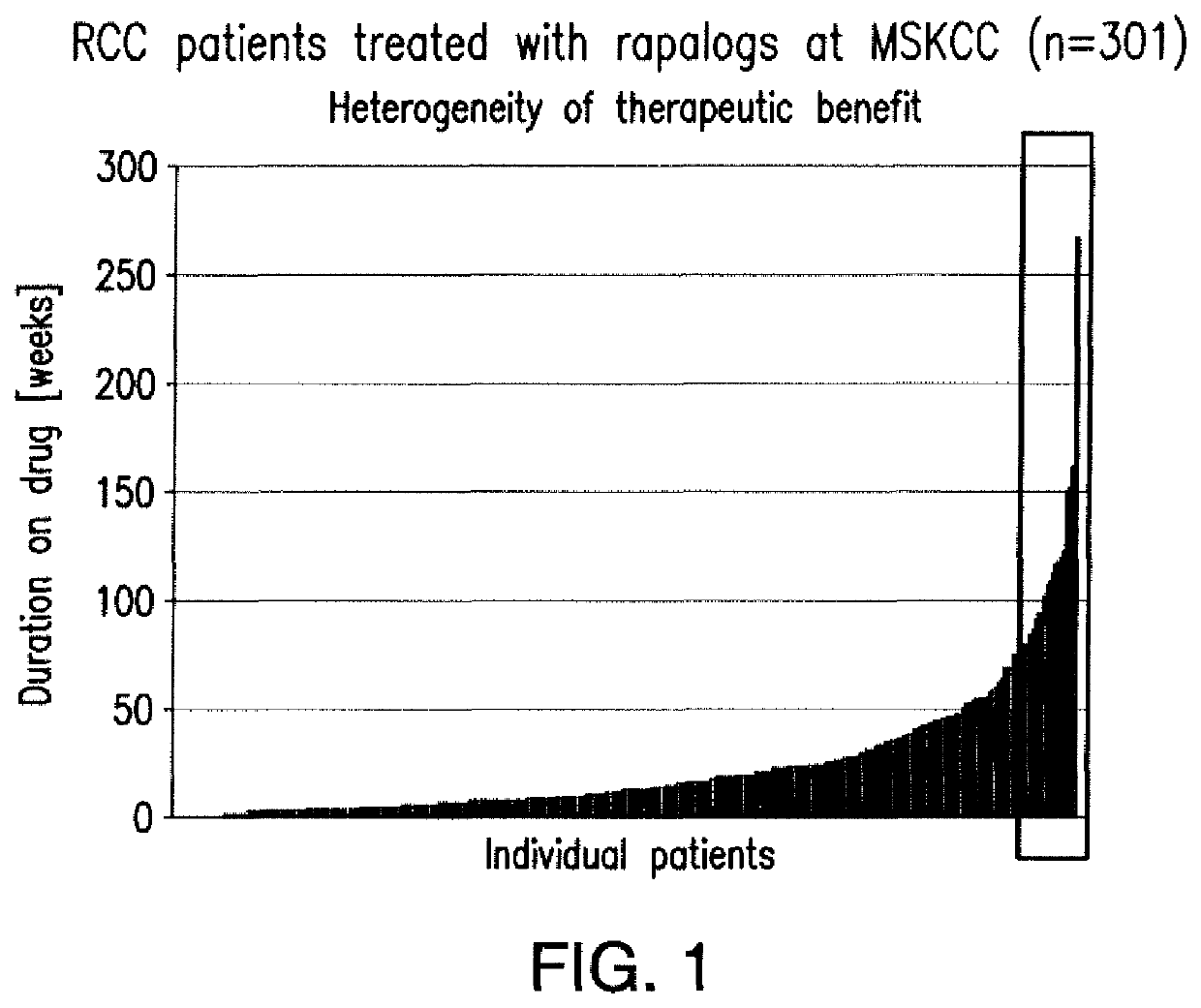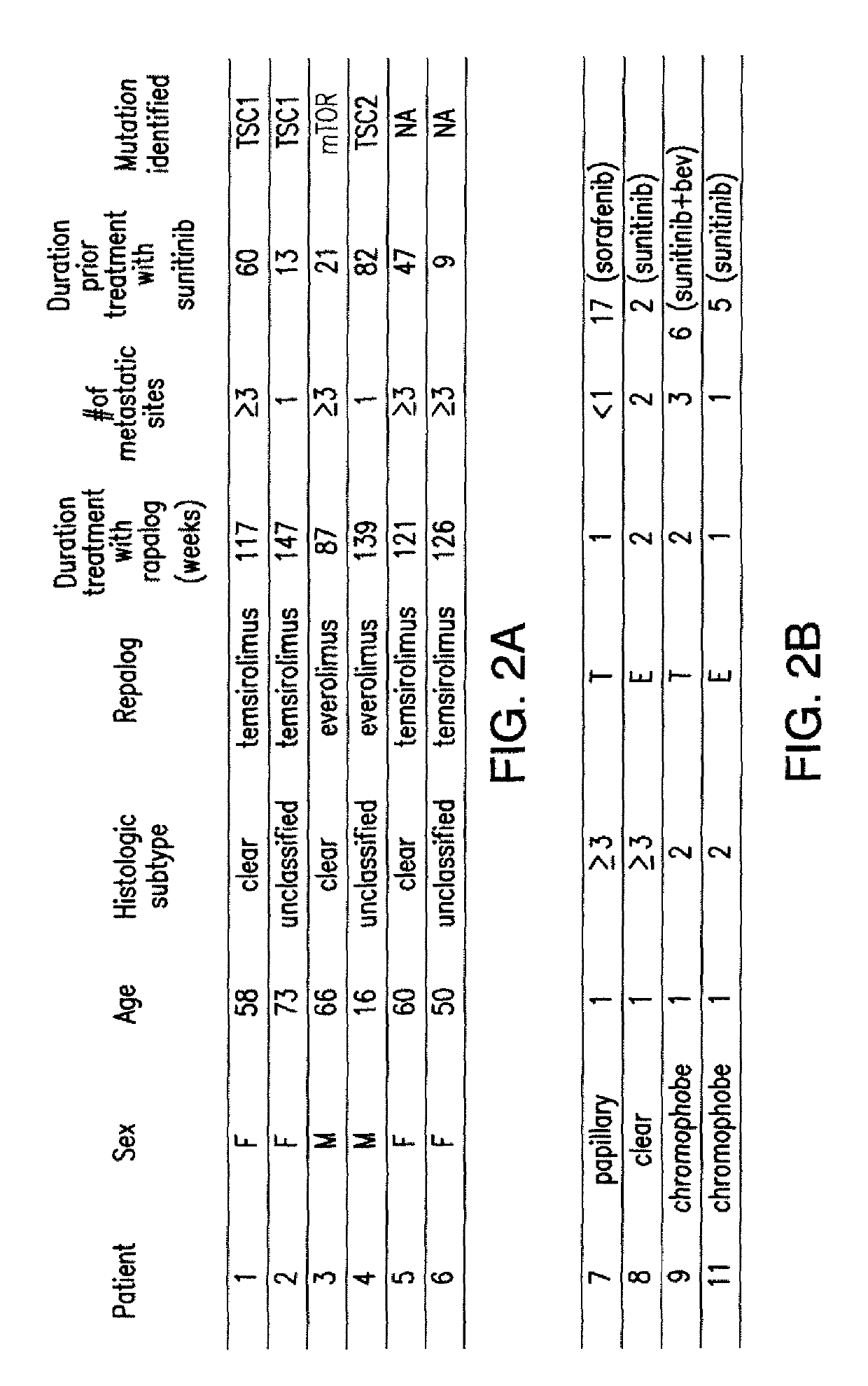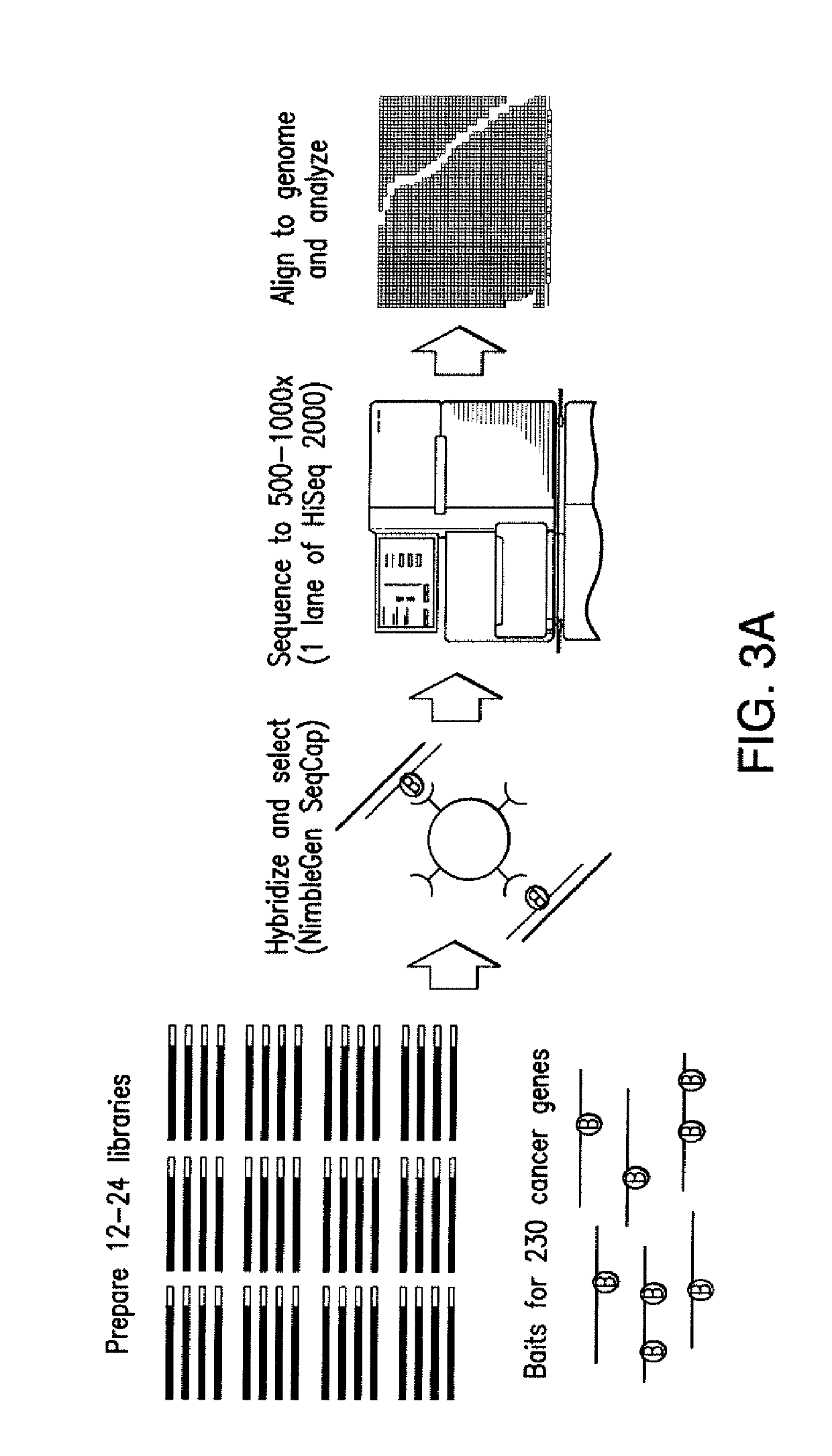Biomarkers for response to rapamycin analogs
a technology of rapamycin analogs and biomarkers, applied in the field of biomarkers for response to rapamycin analogs, to achieve the effect of exceptional therapeutic benefi
- Summary
- Abstract
- Description
- Claims
- Application Information
AI Technical Summary
Benefits of technology
Problems solved by technology
Method used
Image
Examples
Embodiment Construction
[0036]The detailed description of the invention is divided into the following subsections for clarity and not by way of limitation:[0037](i) biomarkers and methods of measurement;[0038](ii) TSC biomarkers;[0039](iii) mTOR biomarkers;[0040](iv) cancer targets;[0041](v) rapamycin analogs;[0042](vi) methods of use; and[0043](vii) kits.
5.1 Biomarkers and Methods of Measurement
[0044]Biomarkers, as that term is used herein, includes nucleic acid, protein, and / or chromosomal markers (i) disclosed below and / or (ii) that are related to the activity level of mTOR, of which rapamycin analogs are inhibitors, in a subject. In certain non-limiting embodiments, a biomarker is an allelic variant or mutation of the version of the gene or protein present in a given population.
[0045]A subject may be a human or a non-human subject. Non-limiting examples of non-human subjects include non-human primates, dogs, cats, mice, rats, guinea pigs, rabbits, fowl, pigs, horses, cows, goats, sheep, etc.
[0046]A bio...
PUM
| Property | Measurement | Unit |
|---|---|---|
| concentration | aaaaa | aaaaa |
| nucleic acid sequencing | aaaaa | aaaaa |
| concentrations | aaaaa | aaaaa |
Abstract
Description
Claims
Application Information
 Login to View More
Login to View More - R&D
- Intellectual Property
- Life Sciences
- Materials
- Tech Scout
- Unparalleled Data Quality
- Higher Quality Content
- 60% Fewer Hallucinations
Browse by: Latest US Patents, China's latest patents, Technical Efficacy Thesaurus, Application Domain, Technology Topic, Popular Technical Reports.
© 2025 PatSnap. All rights reserved.Legal|Privacy policy|Modern Slavery Act Transparency Statement|Sitemap|About US| Contact US: help@patsnap.com



